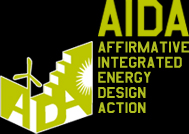ACHIEVED IMPACT
The AIDA project aims to increase the number of nearly-zero-energy-buildings, the number of building professionals trained on integrated energy design and the number of municipalities starting to build/refurbish buildings to nZEB levels. The following results have been achieved:
-
Increasing the visibility of front runners among European municipalities, local authorities and building professionals (e. g. architects, master-builders) was leading to an increased number of nearly zero-energy buildings (new and refurbishment). Within the 86 study tours with more than 3200 participants AIDA offered action tailored to these target groups, such as best practice-learning from operational success stories, presentation of innovative design software and active support for municipal representatives.
-
The Integrated Energy Design (IED) concept is vital for a successful implementation of nZEBs, involving different professions on achieving energy performance requirements. As a starting point to promote nZEBs in Sustainable Energy Action Plans (SEAPs) or similar municipal roadmaps, such development has been initiated within the frame of AIDA in 26 municipalities to spread nZEBs among European Communities. In addition, AIDA supported 28 municipalities in developing nZEB design tenders and feasibility studies, leading to a widespread adoption of IED and nZEBs in municipalities.
-
Provide training for building professionals on integrated energy design and nearly zero-energy buildings was an AIDA objective. One of these tools presented in the workshops was gEnergy, developed by GreenspaceLive, an e-startup and AIDA partner. gEnergy is a powerful building information modelling (BIM) tool using the EnergyPlus platform. More than 1600 building professionals used this online integrated energy design software within AIDA. Moreover, the French www.ecorenover.org tool developed during AIDA allows an economic impact assessment of nZEBs.
-
71.6 Million EUR investment were made in nZEBs by municipalities and building professionals involved in AIDA, leading to 171 toe/yr Renewable Energy production (2 GWh/a), 486 toe/yr (5.6 GWh/a) Primary energy savings and 1.482 tons CO2 equ. emissions reduction.
-
Contact points for building professionals and municipalities play a significant role at local, national, and international level in accelerating the market uptake of nZEBs all over Europe by providing information and support required to the target groups. Contact points inform about roadmaps, tenders, study tours, tools for implementing nZEBs and find financing for nZEB projects. 20 national and 3 international organisations signed a so called "Memorandum of Understanding", stating that they are willing to establish an AIDA contact point, continuing with AIDA offers.
|













